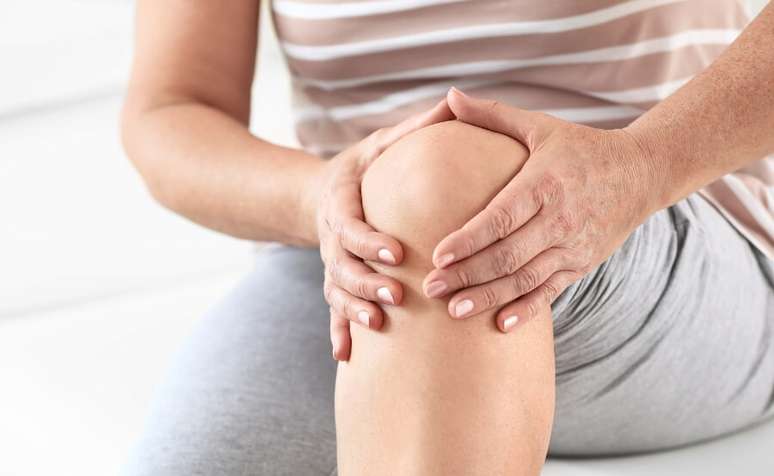With knee pain, obese patients are unable to use physical activity to lose weight
The larger the adipocytes (fat cells), the greater the inflammation. This is a phrase that endocrinologist Deborah Beranger, graduated in Endocrinology and Metabology from the Santa Casa de Misericórdia do Rio de Janeiro (SCMRJ) and with courses on Obesity at Harvard Medical School, often repeats to patients.
“This inflammation affects organs such as the heart, kidneys and liver, but is also very harmful to the joints. For this reason, many obese patients have difficulty moving properly and therefore believe that they will not be able to lose weight,” explains the endocrinologist.
Marcos Cortelazo, orthopedic specialist in knee and sports traumatology, member of the Brazilian Society of Orthopedics and Traumatology (SBOT), agrees: obesity and overweight are identified as the main causes of joint wear and degeneration, since they cause repeated trauma to the knee due to “overload”.
“But this is not the only explanation for why obesity is bad for joints: a recent study found that it changes the environment inside people’s joints, promoting pro-inflammatory conditions that make arthritis worse. Researchers have discovered that certain cells in the joint lining tissue (synovium) of osteoarthritis patients are altered due to factors related to obesity,” explains the orthopedist.
The disease affects 1/4 of the Brazilian population
The World Health Organization has warned that the prevalence of obesity has tripled worldwide since 1975. In Brazil, the chronic disease affects nearly 1/4 of the population, but overweight affects nearly six in 10 Brazilians. “This means predict that we will have an even greater ‘epidemic’ of knee osteoarthritis,” explains the doctor.
The cause of knee pain due to excess body weight is well established in the scientific literature.
“Adipose tissue that has been metabolically altered by obesity releases proteins called cytokines and adipokines, which are known to promote inflammation throughout the body. This study showed that obesity also changes the environment within the joint itself, leaving joint cells vulnerable to “transformation” into cells that promote inflammation,” adds the doctor.
“Therefore, obesity could promote a type of destructive inflammation in joints that goes well beyond what is expected from wear and tear, as also occurs in joints that do not support weight, such as the hands,” he adds.
But after all, how to lose weight in these situations?
“When overweight makes it impossible for the patient to practice physical activity in case of severe osteoarticular overload, the treatment of overweight must begin with a change in diet, often with the aid of drugs. A well-studied diet and medications can progressively lead to weight loss that will improve the joint and, at a later stage, the patient will be able to start exercising,” says Deborah.
“Treatment of obesity is based on interventions aimed at modifying lifestyle, indications for dietary therapy, increased physical activity when possible and behavioral changes. However, the percentage of patients who do not obtain satisfactory results with conservative measures is high,” explains Marcella Garcez, nutritionist and director of the Brazilian Association of Nutrology (ABRAN).
In these cases, drugs are recommended: «They can facilitate the adoption of new eating habits and are also recommended in cases where it is very difficult to control food intake or treat peripheral disorders resulting from a slimming treatment», adds Marcella.
According to Deborah Beranger, drugs and balanced meals serve, in these cases, to break the body out of the vicious circle. “Reducing weight will result in pain relief. We then recommend starting physical activity, even low-impact ones, such as swimming or aquagym”, explains the endocrinologist.
It is necessary to include physical activity
According to Dr. Marcos, it is important to include physical activity, as the joint was developed for movement.
“People who are overweight or obese may benefit from decreasing body weight to prevent or delay structural defects in knee osteoarthritis,” he explains.
Weight training can happen later, to strengthen the joints. “Endurance strength exercises, such as weight training and functional training, which combine strength training and aerobic exercises, aim to increase or preserve muscle mass and therefore maintain basal metabolic rate and energy expenditure within the expected range for body composition. In this way, glycemic control and other metabolic changes such as obesity, dyslipidemia and hypertension improve,” explains Marcella.
“We must first of all aim to control or adjust our weight, avoiding being overweight. And secondly, the maintenance of lean mass or muscle, which has the secondary effect of protecting the joints. Therefore, in addition to physical exercise, we must prioritize protein intake and correct hydration. All this will be beneficial for your knees and metabolic health,” concludes Marcos Cortelazo.
inspires transformation in the world of work, in business, in society. Compasso, a content and connection agency, is born.
Source: Terra
Ben Stock is a lifestyle journalist and author at Gossipify. He writes about topics such as health, wellness, travel, food and home decor. He provides practical advice and inspiration to improve well-being, keeps readers up to date with latest lifestyle news and trends, known for his engaging writing style, in-depth analysis and unique perspectives.








![Such a wonderful sun in advance: Summary of the episode on Tuesday, August 12 [SPOILERS] Such a wonderful sun in advance: Summary of the episode on Tuesday, August 12 [SPOILERS]](https://fr.web.img3.acsta.net/img/8d/96/8d9627fc84d0ab5d33162b65dbbae176.jpg)
